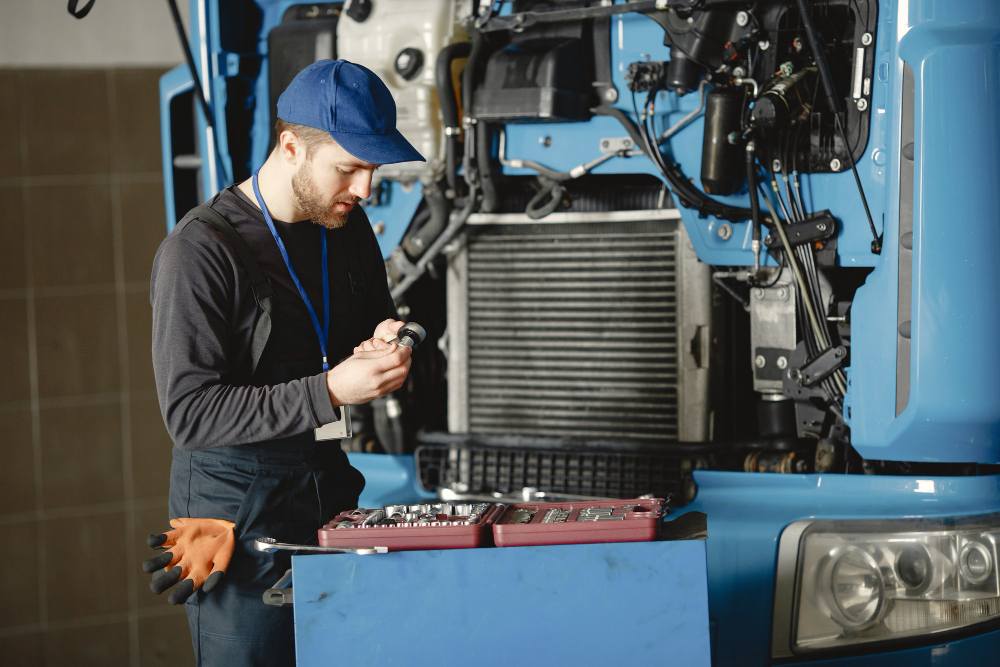This is a question most companies get stuck with: should you repair your air compressor or buy a new one? Making the right call can spare you a time and money. This is further complicated by the possibility of production delays, safety concerns, shifting compressed air efficiency benchmarks, and technology evolution.
Signs You Need a Repair
Small Problems with Easy Fixes:
- Minor leaks or pressure fluctuations are often caused by a valve or seal replacement
- Noises or vibrations that are caused predominantly by worn bearings or loose mounting
- Performance decrease of a filter due to worn-out parts, dirt accumulation, or overused components
- Electrical repairs caused by faulty switches or burnt-out panels
As long as the unit is below 5 years of age and serviced regularly, having the compressor repaired is where the savings lie. These repairs usually cost between 10-20% of a new unit’s price and are performed by skilled technicians, increasing equipment longevity by multiple years.
Affordable Fix Scenarios:
Repairs focusing on one component, such as motor replacements, valve rebuilds, or control systems upgrades, are often economically favorable apologies of focus for parts. Parts. Parts. Parts. Emergency repairs finished in 1-2 days also help keep production pauses to a minimum.
Replacement Strategies
Indicators Pointing Directly Towards Replacement:
- Safety risk due to aging pressure vessels or safety systems.
- Outdated model where spare parts are either cheap but impossible to get or expensive.
- Inaccurate rising energy costs for the compressor.
- The model breaks down repetitively and services more than 3 times a month.
If the repairs will incur over half the cost of buying a new system, the decision to swap out makes more financial sense. On top of that, compressors above 15 years will henceforth run on 20-30% more electricity than modern devices, making the switch operation-wise very appealing.
Additional Factors That Negatively Impact Costs:
Posting. Posting. Posting. Posting. Posting. Posting. Posting. Posting. Posting. While backwards working compressors are unlocked, they will charge actively more on repair tweaks, to fix the ever-growing energy bill, and meet government safety and insured guidelines. What all blows is that they collectively borrow balance out the price change in couple years through the continuously rising electric stats.
Importance of Service Records
Accurate service logs evaluate the remaining lifespan of your compressor and yields insights for logical decisions. If regular servicing is done and breakdowns continue to rise, upgrading may be necessary. Maintenance records capture costs incurred for repairs, downtime, parts availability, and performance over time.
Important Metrics Summary:
Track mean time between failures (MTBF), total maintenance costs per operating hour, as well as energy spend. A declining MTBF or rising maintenance costs often indicate that replacement is needed sooner rather than later.
Advantage of Predictive Maintenance:
Strategically timed repairs or replacements can be avoided with modern systems that track component failure indicators such as vibration, temperature, and oil gaps.
Financial Strategy Overview
Calculating Total Cost of Ownership:
Evaluating repair vs replacement needs after factoring in initial purchasing price, installation, energy expenditure, maintenance costs, and projected life will yield insightful differences. Replacement may become more appealing after factoring in potential subsidized tax, utility rebates, or financing.
Assessing the Impact of Productivity Loss
Compare the production loss costs caused by downtime due to equipment failures and fixes. Enhanced reliability improves uptime. For some organizations, the savings gained from increased uptime justifies the replacement investment. This is common in critical use cases where the outage of compressed air results in a production standstill.
Cost Efficiency of New Model Compressors
The new models come with enhanced features including quieter operations, advanced energy effectiveness, improved warranty offers, and smart controls integration for better prognosis and automation, improving compressing predictive maintenance and performance specialization.
Advanced Technology Benefits:
Modern units IoT and smart control features improve automation, such as variable speed drives (VSD) that control output. VSDs can lower energy usage by 15-35%. Equipment IoT grants remote tracking and scheduled upkeep, real-time optimization on over-automated older units performance, boosting their potential.
Environmental Benefits:
New compressor models help businesses to qualify for green tax rebates, making them more efficient than older model compressors. They also support increasing sustainability goals alongside strict environmental regulation compliance on energy usage and emissions.
Justifying repair estimates with in-depth evaluation
Hiring trained technicians to conduct thorough evaluation earns businesses professional objectivity beyond simple repair cost estimates, aiding in decision making. Assessments must include efficiency testing, safety inspections, and lifecycle cost projections for comprehensive analysis aimed to provide value.
Conclusion
The decision to repair an air compressor or replace it wholly depends on a multitude of factors, including cost, performance metrics, age, and overarching business goals. Take a comprehensive view of total cost of ownership, productivity impacts, and future operational needs while driving your decision. Avoid costly mistakes by seeking unbiased guidance from industry professionals who can provide objective analysis. The best decision will balance immediate costs with long-term operational success while guaranteeing a dependable compressed air supply or your crucial business activities.




